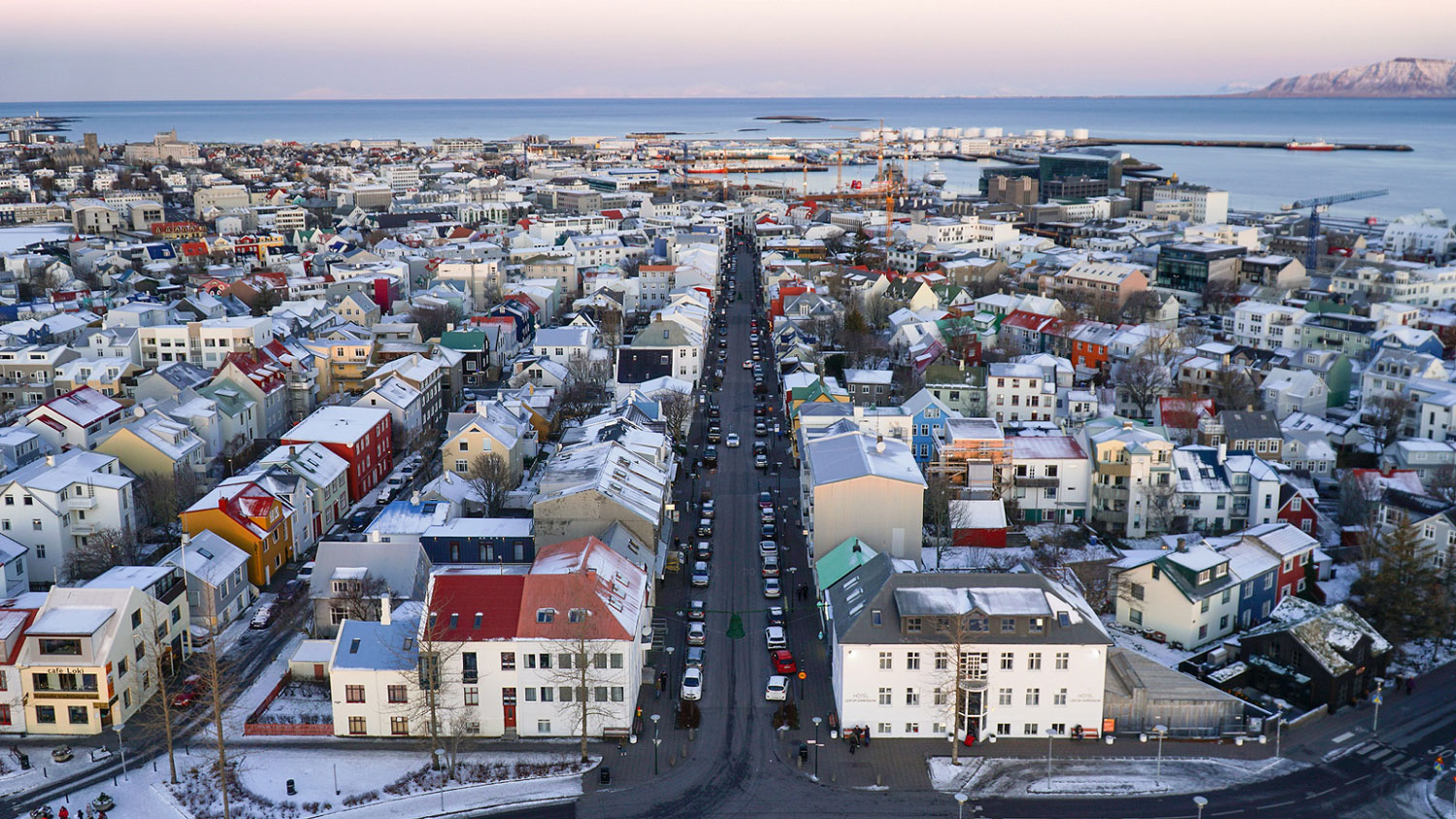Icelandic is a language you might have heard without even realising it. In fact, if you’ve ever heard a song by Sigur Rós, which you will have done if you’ve ever watched some emotional sport coverage on television, then you’ll have heard some Icelandic.
This unusual language charms with its soft consonants and drawn-out vowels, having both familiar and alien-like qualities. Icelanders sometimes lovingly refer to their mother tongue as okkar ástkæra ylhýra, roughly “our beloved warm language”, a reference to a work by 19th-century Icelandic poet Jónas Hallgrímsson.
The Icelandic language was brought to the then-uninhabited island of Iceland by western Norwegians in the eighth century. In those days, it was still known as norrœnt mál “Norse language” or even dǫnsk tunga “Danish tongue”.
Due to centuries of isolation from the mainland Scandinavian languages, Icelandic developed in its own unique direction, dropping some features that the other Scandinavian languages have kept (namely certain vowels), preserving others (such as complex verb conjugations and noun cases) and coming up with its own innovations (mainly vocabulary). This has made Icelandic a different beast from both its modern Scandinavian cousins and Old Norse.
Our Icelandic translation services
We offer translation services from English, Danish, German and Swedish into Icelandic, and from Icelandic into English.
Today, there are around 340,000 speakers of Icelandic in Iceland. The language is unique in that it is one of the smallest “nation-state” languages in the world. Icelandic is used at all levels of society: in government, education, commerce and everyday life.
Because of its small number of speakers, Icelandic has long been considered under threat of extinction from other languages: originally Danish owing to Iceland’s former status as a Danish colony, but these days English. Alarmists often overplay the possibility of Icelandic dying out – most probably because their language is Icelanders’ most tangible evidence of their distinct cultural heritage and national identity.
Let’s find out more about what exactly it is that makes this language so special.
1. Icelanders coin their own words
One of the most distinctive features of Icelandic compared to its mainland cousins is its strong tradition of málrækt or “language cultivation”. This semi-official policy, which finds its roots in the Icelandic nationalist movement, means that Icelandic usually creates its own words for foreign concepts rather than importing a loanword.
Oft-cited examples include tölva “computer”, which is a blend of tala “number” and völva “seeress”, and sími “telephone”, a revival of a disused word that meant “thread”. These words have themselves spawned neologisms as new concepts emerged: spjaldtölva “tablet computer” is a compound with spjald- “tablet, card”, for example, while snjallsími “smartphone” adds the prefix snjall- “smart, clever” to sími.
If these words are considered by Icelanders to be functional enough, then they often enter into widespread use. There have been many well-meaning suggestions that have fallen by the wayside, though. One word where the jury’s still out is flygildi “drone”, made up of the prefix flyg- “flight” and -ildi, an ending analogical with fiðrildi “butterfly”. For now, it seems most Icelanders just say dróni.
2. The alphabet is unique
No other language in the world shares Icelandic’s unique collection of unusual letters. Unique to Icelandic is Þ þ, or thorn, often confused with P p by non-Icelandic speakers. This letter represents an unvoiced “th” sound, as in bath.
Its counterpart is eth, written Ð ð, which represents a voiced “th” sound, as in bathe. This letter is also used in Faroese, although it doesn’t represent one particular sound there, and in Elfdalian (a highly conservative Swedish dialect).
Other Icelandic letters include Æ æ and Ö ö and a full range of accented vowels which represent various different sounds: Á á, É é, Í í, Ó ó, Ú ú and Ý ý.
3. It has a lot of “grammar”
Another stand-out feature of Icelandic is its complex grammar. What most people mean by this is a complex morphology, i.e. lots of word endings. Icelandic verbs conjugate for person, number, tense and mood (if you studied French at school, then bad memories of learning the subjunctive may come flooding back). There is also a middle voice in addition to the more familiar active and passive.
Nouns and adjectives are no walk in the park either. Nouns are declined in four cases: the nominative, accusative, dative and genitive (e.g. hestur “horse” has three additional forms: hest, hesti and hests), as well as for number and definiteness. Adjectives also decline in these four cases, as well as for definiteness and gender.
This is probably the hardest aspect of the language to grasp for English and Scandinavian speakers, although if your native language is Finnish, Polish or Russian, for example, you’ll have a head start.
4. It has a fantastic literary heritage
The language is truly the jewel in the Icelandic cultural heritage crown. The relative isolation of Icelandic means that medieval Icelandic sagas or Íslendingasögur are easily accessible to almost any native speaker, although Icelanders’ ability to fully comprehend the sagas as they were written without any formal training is often slightly exaggerated.
The rich literary heritage of the sagas has been kept alive over the centuries. Icelanders have always been great wordsmiths: what they lack in classical architecture they make up for in the written word. This small nation still publishes over a thousand books a year, spanning all genres from crime fiction to poetry to recipe books and translations of foreign bestsellers.
Technology is leaving Icelandic behind
One of the greatest existential threats to Icelandic is, and always has been, the advent of new technology. The language has proven to be surprisingly resilient: an official committee comes up with names for new car parts, to name but one example.
However, the pace of innovation and change today is starting to overtake that of Icelanders’ ability to preserve their language. Consumption of English-language media, both new and old, is just as widespread as in the other Nordic countries, if not more so.
Compared to their Nordic cousins, Icelanders are at a disadvantage in that a lot of widely-used operating systems, software and services are not available in their language, let alone voice assistants like Siri and Alexa. Things have improved slightly in this regard in recent years, however.
The Icelandic government is taking steps to rectify the issue through its Icelandic Language Technology Fund, although it is yet to be seen what lasting impact this will have on the status of the language. The fact remains that a lot needs to be done to ensure this warm language thrives and survives for future generations.

Nordic dialect map
Learn about the languages and dialects of the entire Nordic region with our interactive map.
Nordic dialect map
Learn about the languages and dialects of the entire Nordic region with our interactive map.




